Last Updated on November 25, 2023 by Cathy
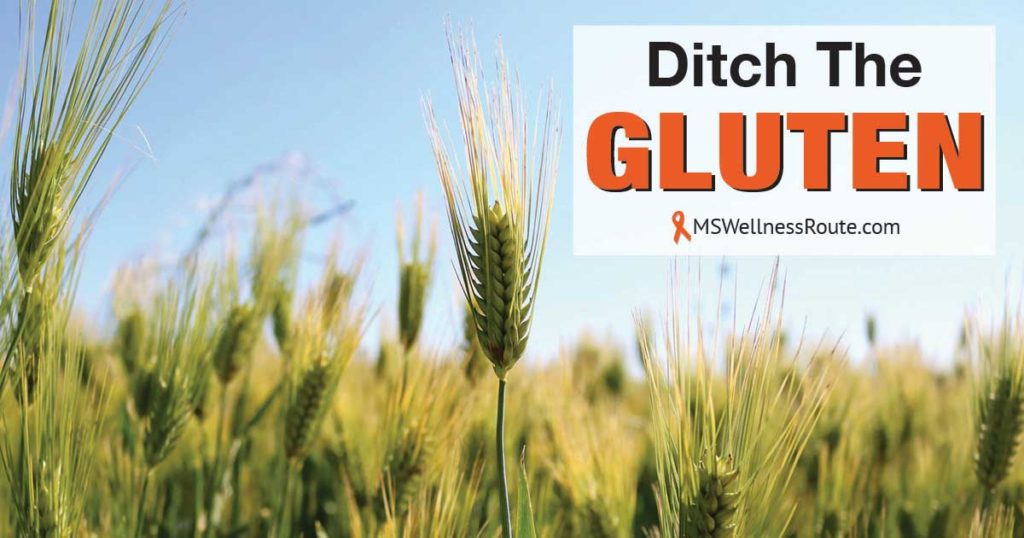
Gluten isn’t what it used to be. It is now genetically modified to be drought-tolerant, grow faster, and resist bugs. Unfortunately, this leads to systemic inflammation in many people. There are many reasons why you should ditch gluten to improve your health.
Gluten is a protein found in certain grains such as barley, oat, rye, and wheat. It’s also in many products like beer, malt, hair products, and cosmetics. Gluten gives dough elasticity, it’s what holds it together.
Some people have a severe intolerance to gluten known as celiac disease. If you have the HLA-DQ2.5 or HLA-DQ8 gene, it puts you at a higher risk for celiac disease. You can get a DNA test from 23andMe to find out if you have this gene. You will then need to run the raw data through another source like Genetic Lifehacks (it’s free).
Gluten Intolerance
You don’t need to have celiac disease to benefit from a gluten-free diet. Many people have a gluten intolerance which causes inflammation and leads to a leaky gut. Many signs point to gluten intolerance such as:
- Acne
- Anxiety
- Autoimmune diseases
- Bloating
- Brain fog
- Constipation
- Depression
- Diarrhea
- Eczema
- Heartburn after eating gluten
- Migraines
Gluten and Multiple Sclerosis
Most people can tolerate gluten. But for people with multiple sclerosis (MS), it could cause an immune response. Although it’s not as bad as having celiac disease it is still a sensitivity that’s linked to inflammation.
“Multiple sclerosis is a chronic inflammatory disease characterized by central nervous system.” – PubMed
I took a DNA test and discovered I have the HLA gene that’s linked to autoimmune diseases. The HLA-DR gene puts me at a higher risk for MS which I have. The HLA-DQ8 gene puts me at a higher risk for celiac disease which I don’t have. You can see my results below.

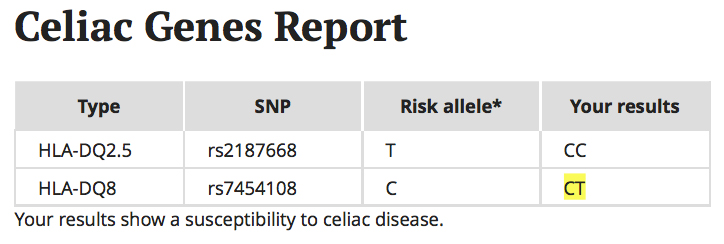
Most conventional doctors say only people with celiac disease should avoid gluten. Functional medicine doctors say it’s best to avoid gluten altogether. This is because gluten increases inflammation.
If you have an autoimmune disease your body will benefit from a gluten-free diet.
“Studies found a positive effect of a gluten-free diet on disease-related markers in patients with MS.” – PubMed
According to one study, food allergies increase disease activity in MS. Allergies are more severe than food sensitivities. But, food sensitivities can still hold you back when you are trying to heal your body.
“The cause of MS is multifactorial and include genetic predisposition together with environmental factors…” – PubMed
Gluten can create a “leaky gut” allowing food particles and toxins to pass through where it doesn’t belong. Studies show gluten could contribute to chronic inflammation and autoimmune diseases.
“The daily consumption of wheat products and other related cereal grains could contribute to the manifestation of chronic inflammation and autoimmune diseases.” – PubMed
How to Ditch the Gluten
The first step is to recognize and remove all gluten from your home. This includes:
- Beer
- Bouillon cubes
- Bread
- Cake
- Cereal
- Chips
- Condiments
- Cookies
- Crackers
- Flour tortillas
- Granola
- Gravy
- Marinades
- Pasta
- Pizza
- Pre-seasoned meats
- Salad dressings
- Sauces
- Soup mixes
- Soy sauce
The list is too long to name them all. Don’t trust labels that claim the product is gluten-free. The Food and Drug Administration (FDA) allows a trace of gluten in gluten-free products. When shopping always read the ingredients to be sure it’s truly gluten-free.
Check for obvious ingredients such as:
- Barley
- Brewers yeast
- Malt
- Oats (unless it’s labeled gluten-free)
- Rye
- Wheat
Oats are often made in the same area with gluten so they can get contaminated. Make sure the oats you are buying are “certified” as gluten-free. The same goes for flours, avoid all flours made from gluten or grains.
After you have healed your gut you can try and introduce gluten-free grains such as amaranth. You’ll have to avoid gluten for the rest of your life. If the label lists an ingredient you aren’t familiar with, avoid it until you can confirm what it is.
Eating Gluten-Free at Restaurants

Eating out at restaurants is a little tricky but it’s not impossible. Check to see if they have a menu online before going to the restaurant. Ask them if they have a gluten-free menu. You will have to ask, they won’t voluntarily give it to you.
We do this for my son who is a type 1 diabetic. We ask for a menu that includes the number of carbohydrates for each menu item. You don’t need to explain your situation just say you cannot eat gluten. Restaurants are more than happy to accommodate your needs to keep you coming back.
You can’t trust everything on the menu. For example, sauces and salad dressings usually contain gluten. And how was it cooked? Was it cooked with other food that has gluten?
Be smart about your choices and don’t beat yourself up if you discover you made a mistake.
Where is gluten found?
Gluten isn’t only found in food. It seems like gluten is in everything, so you must be very aware of what you are buying.
Other items with gluten in them:
- Communion wafers
- Cosmetics
- Hair products
- Lip balm/lipstick
- Prescription and over-the-counter medications
- Sunscreen
- Vitamins and supplements
Grains
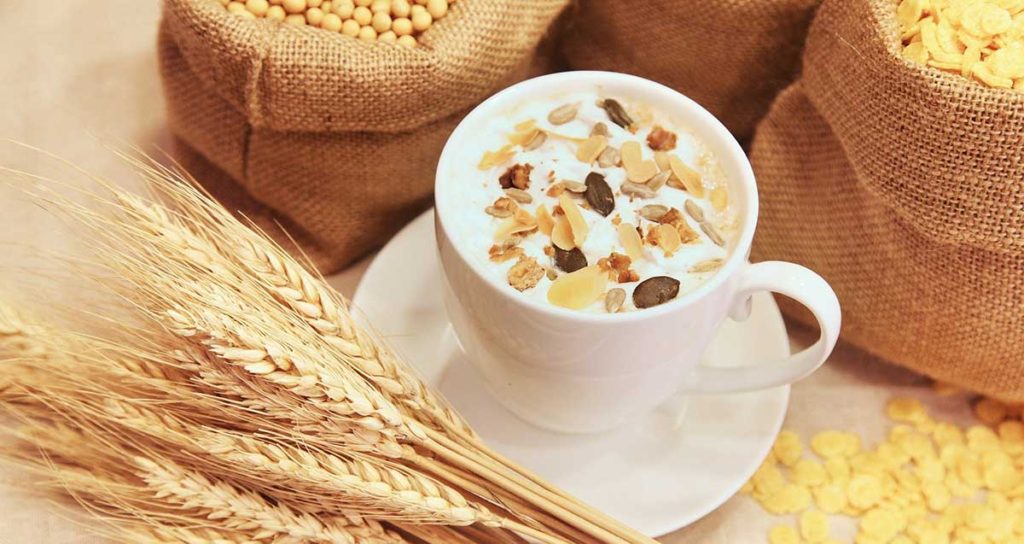
While you are trying to heal your body you should also avoid grains. In the typical western diet, grains are in foods most people buy. Such as bread, cereal, pasta, and junk food. Even the USDA recommends eating an equal amount of grains as vegetables each day.
Going grain-free is challenging but as you can see in the list below, there are plenty of other options. They don’t always act the same so you may need to experience them to get the recipe right. I found cassava flour is a good replacement for regular white flour.
Gluten-free, grain-free flour alternatives:
- Almond flour or almond meal
- Arrowroot flour or arrowroot starch
- Banana flour or banana starch
- Cashew flour
- Cassava flour
- Chestnut flour
- Coconut flour
- Hazelnut flour
- Plantain flour
- Pumpkin flour
- Sunflower seed flour
- Sweet potato flour
- Tapioca flour or tapioca starch
- Tigernut flour (it’s not a nut)
Quick Links To Information In This Post:
How To Go Gluten Free
DNA Test For Multiple Sclerosis
Paleo Flour Substitutes
Ditch the Gluten
Removing gluten from your diet and body care products can seem a little overwhelming. When I first started my diet, gluten was the hardest for me to stop eating. I ate cereal every morning, took sandwiches to lunch, and ate a lot of bread and pasta for dinner.
Fortunately, there are plenty of satisfying gluten-free foods that are delicious. Load up on vegetables, eat pasture-raised meats, and use herbs to enhance the flavor. Use gluten-free flour on occasion to keep your blood sugar low.
For those with MS, every time you eat gluten your immune system sends out antibodies to attack. Removing gluten will reduce inflammation, ease digestive issues, and your energy will increase.
Eating a gluten-free diet and healing your gut is very beneficial for reversing MS.
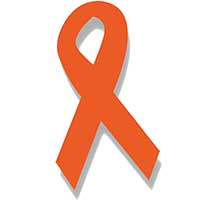
Free Wellness Library!
Subscribe for free and I’ll send you the password to my secret library filled with many printables for your wellness journey.
Want to remember this health tip? Pin it to your favorite Pinterest board!
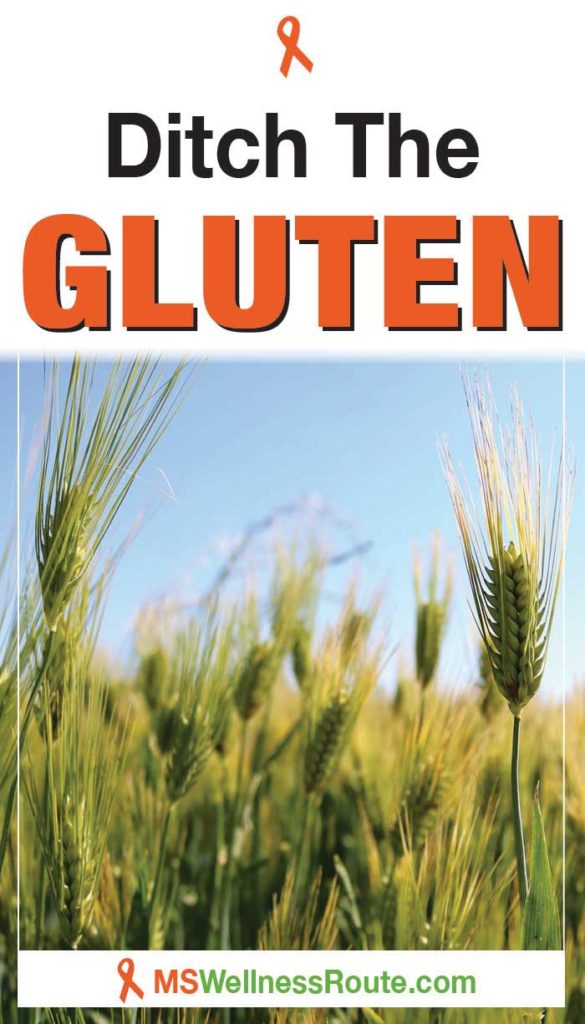
Resources:
https://www.ncbi.nlm.nih.gov/pmc/articles/PMC3705319/
https://www.ncbi.nlm.nih.gov/pmc/articles/PMC5241505/
https://www.ncbi.nlm.nih.gov/books/NBK538505/
https://pubmed.ncbi.nlm.nih.gov/30384202/
Photos courtesy of pixabay.com and pexels.com.
Ditch the Gluten





